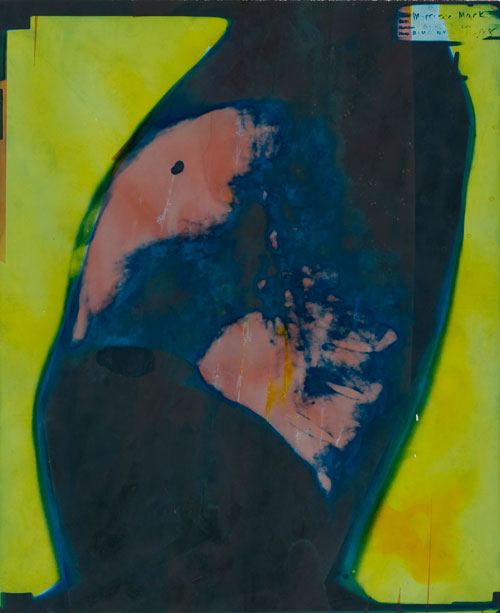Mark Morrisroe
Fotomuseum Winterthur, Switzerland
Fotomuseum Winterthur, Switzerland

From the late 1970s to the late 1980s, Mark Morrisroe photographed himself and his circle of friends, including Nan Goldin, David Armstrong and Jack Pierson, in countless portraits and nudes. Unlike in Goldins work, the emphasis here is not on the emotional aspect of an intimate situation in a relationship but on the photograph as a posed calling card. And in some cases quite literally: A self-portrait, used by the 25-year-old Morrisroe when answering sex adverts, refers to his entry into prostitution as the 16-year-old Mark Dirt (Little Me as a Child Prostitute, 1984). In the slightly blurred Polaroid reproduction, a young man poses with legs akimbo, his member semi-erect. Scratches and other traces of processing are visible around the edges of the print; they were probably created by the copying procedure which involved superimposing black and white and colour negatives; Morrisroe also signed the work near several coloured marks and noted the title and date.
Most of Morrisroes portraits follow this calling card logic of the idealizing pose. His preference for available light, blurring, graininess and subdued, almost monochrome colour schemes recalls the photography of the late 19th century. Even if the borders with their scratches, notes and graphic elements disturb the soft-focus idealization to some extent, Morrisroes protagonists still look like 1960s film stars, flirting with the camera in admittedly overtly sexual poses but in a romantic setting.
In isolated works, representations of the body as currency and commodity openly highlight the contradictions and conflicts connected with this approach. Besides the few self-portraits showing Morrisroe increasingly weakened by AIDS in his final years, the exhibition includes his late photograms (198588). In these works, the contradictions of the idealized poses are developed into an explicit engagement with both pathological evidence and media replications of the body: X-ray images of the artist, a medicine bottle and porn magazines in neon colours end up on Morrisroes operating table in the darkroom at his hospital.

Apart from these photograms and a few collages, Morrisroes films unfortunately shown only on a monitor in the museums foyer were the sole works here addressing the consequences of prostitution and permanent self-portrayal, extending as far as the denial and even violent eradication of human identity. Laziest Girl in Town (1981), a flamboyant drag comedy with constant histrionics from the three actors, ends with a rape. Whenever Morrisroe experiments with the outcomes and contradictions of marketing his own body, the work becomes topical, for instance in relation to the queer copy-and-paste aesthetic of contemporary artists like Kalup Linzy and Ryan Trecartin. Unfortunately, the retrospective included few such links to the present and concentrated instead on the long succession of posers in Morrisroes work. In the face of todays ubiquitous culture of self-portrayal and exposure, this felt rather redundant. By contrast, the publication about Morrisroes estate is meticulous in its balanced treatment of all fields of the artists output and can be fully recommended. It allows the photograms, collages and found material to be read as an integral part of the oeuvre instead of appearing as a peripheral phenomenon alongside the striking poses.
Translated by Nicholas Grindell
























